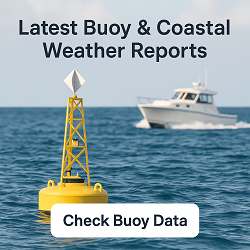Thompsonville, MI Weather Forecast and Current Conditions
Current Conditions From Nearby Station

Feels Like 32°F
at
Point Forecast at a Glance







7-Day Temperature Trend
Week Ahead Summary
Variable high temperatures through the week, ranging from 25°F to 38°F. Unsettled weather expected with snow likely on at least 6 days.
Climate Context
This week's forecast shows temperatures running 8°F below the historical average for November-December. Normal highs for this period are around 39°F with lows around 27°F.
This Date in Weather History
1987 - A Thanksgiving Day storm in the northeastern U.S. produced heavy snow in northern New England and upstate New York. Snowfall totals in Maine ranged up to twenty inches at Flagstaff Lake. Totals in New Hampshire ranged up to 18 inches at Errol. Gales lashed the coast of Maine and New Hampshire. A second storm, over the Southern and Central Rockies, produced nine inches of snow at Kanosh UT, and 13 inches at Divide CO, with five inches reported at Denver CO.
Thompsonville, MI 7 Day Weather Forecast Details
Wednesday Nov 26

Day: Rain and snow showers. Steady temperature around 38. South wind 10 to 15 mph becoming west in the afternoon. Winds could gust as high as 25 mph. Chance of precipitation is 100%. Little or no snow accumulation expected.

Night: Snow showers. Areas of blowing snow. Low around 27. Blustery, with a northwest wind around 20 mph, with gusts as high as 45 mph. Chance of precipitation is 100%. New snow accumulation of around 4 inches.
Thursday Nov 27

Day: Snow showers. Patchy blowing snow before 3pm. High near 33. Breezy, with a northwest wind 15 to 20 mph, with gusts as high as 45 mph. Chance of precipitation is 80%. New snow accumulation of around an inch possible.

Night: Snow showers, mainly before 1am. Low around 23. Northwest wind around 15 mph, with gusts as high as 30 mph. Chance of precipitation is 80%. New snow accumulation of around an inch possible.
Friday Nov 28

Day: A 40 percent chance of snow showers before 1pm. Mostly cloudy, with a high near 30. Northwest wind 10 to 15 mph.

Night: Cloudy, with a low around 20.
Saturday Nov 29

Day: Snow showers. High near 31. Chance of precipitation is 90%.

Night: Snow showers. Cloudy, with a low around 22.
Sunday Nov 30

Day: Snow showers likely, mainly before 1pm. Cloudy, with a high near 34.

Night: A chance of snow showers. Mostly cloudy, with a low around 16.
Monday Dec 1

Day: Mostly cloudy, with a high near 25.

Night: A chance of snow showers. Mostly cloudy, with a low around 13.
Tuesday Dec 2

Day: Mostly cloudy, with a high near 26.
About Thompsonville, MI
Content from Wikipedia, licensed under CC BY-SA 3.0.
How We Provide Better Local Weather
Current conditions: We use the nearest available station to your location - including professional MESONET/MADIS and local weather stations - often miles closer than regional airports.
Forecasts: National Weather Service point forecasts predict for your specific area, not broad regional zones, making them far more relevant to your location.



